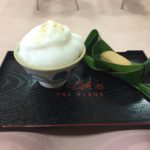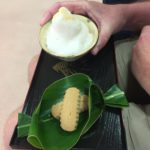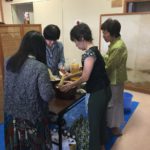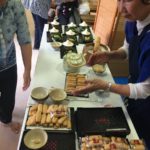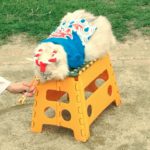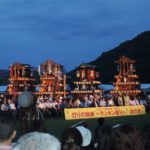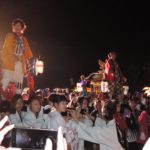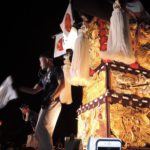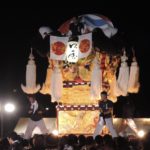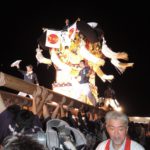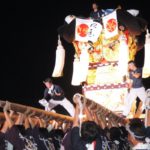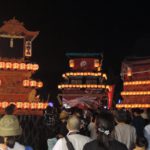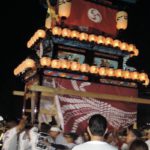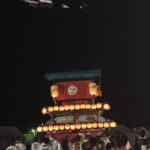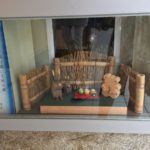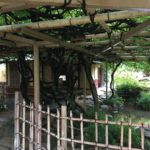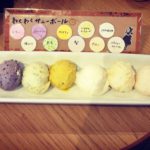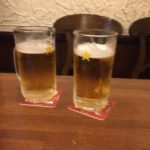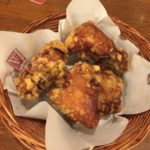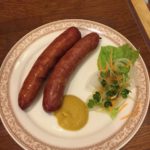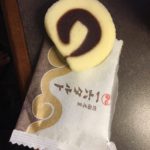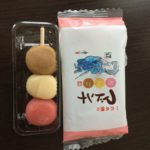波上宮 Naminoue Shrine, located in Naha.
神輿 mikoshi: palanquin used to transport Shinto deities, a portable shrine.
なんみん祭: Nanmin Matsuri (Naminoue Shrine festival, Nanmin is the shrine’s name in Okinawan language)
Possibly the closest to a Japanese mainland-style mikoshi you will see in Okinawa is during the Nanmin Festival at the Naminoue shrine!
Every year the mikoshi procession is on the Sunday of the festival. It starts at 10am from Naminoue Shrine and winds it way to the open space in front of the Palette Kumoji (Ryubo) at the end of Kokusai-dori. There is also eisa, traditional Ryukyu dance, shishimai (lion dance), karate demonstrations, a beach tsunahiki (tug-of-war), bukubuku-cha/tea ceremony, and more during this weekend festival (Saturday & Sunday).
This is a must-see for anyone living in Okinawa who has not experienced this on the mainland of Japan. Obviously on mainland, this is a much more common site to see, and they are very exciting and exuberant events. This one is much smaller, and less crowded, which in some ways makes for a better experience!
**Bukubuku-cha event: started from 2pm on Saturday of the festival, Naminoue shrine. We watched as some skilled ladies made the foam for the tea. At 2pm, they had benches to sit down while they came around with individual trays containing a cup of tea topped with foam and 2 chinsukou (cookies). This event was free! Yum! On Saturday, there was also children’s sumo from 1pm, and some taiko performances from 6pm (we did not stay for taiko so I cannot comment on that experience).
**Mikoshi event: started at 10am on Sunday at the shrine, however we met up with them by the Ryubo Palette Kumoji around 11am. There was the parade into the square, then some ceremonies/rituals. Next came various performances, of which the shishimai was probably my favorite. As always they came thru the crowd to try to bite small children. While this was going on, the pole-dancing went on by Kokusai-dori. No, not like that… by pole-dancing I mean “Gaaee” ガーエー, which means something like “winner’s triumphant shout.” Basically it entails guys carrying a large, heavy bamboo pole decorated with flags and flowers and other decorations, called hatagashira 旗頭. Hatagashira are an example of the traditional Okinawan culture. They are symbols created to represent a the success of a village. After the various performances wrapped up, the parade returned to the shrine and beach for some more events. At this point my hubby was pretty done, so we headed home.
imgur album of pictures: https://imgur.com/a/HLbRn
Naminoue Shrine: https://goo.gl/maps/hTQHchmVj8G2
Palette Kumoji: https://goo.gl/maps/kj1rYVvFkr42
**it is best to take public transportation to this event, or park in one of the lots around Kokusai-dori– there is no parking at the shrine itself.
